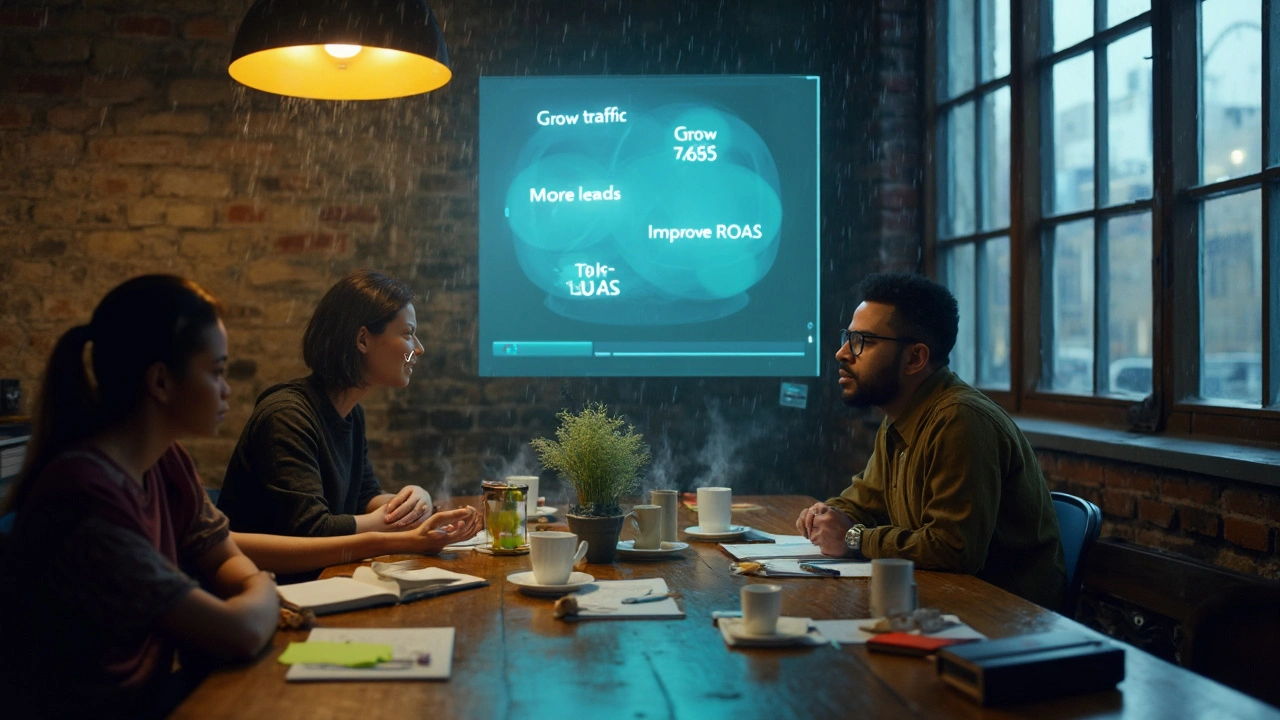
Maximize Online Marketing with ChatGPT: Complete Guide for Marketers
Turn ChatGPT into your marketing engine. Step-by-step playbooks, prompts, checklists, and metrics to grow traffic, leads, and ROAS-without guesswork.
Want more traffic, leads, and sales without guessing? A clear online marketing strategy ties goals to actions—so you stop wasting time and money. Below I’ll give a practical system you can use this week, with tools and steps that actually move the needle.
Start with two simple things: one measurable goal and one clear audience. Pick a single goal like “increase organic leads 30% in three months.” Then describe your ideal customer in one paragraph: what they search for, where they hang out online, and the main problem they want solved. That clarity will shape the rest of your work.
Build a content hub around 3–5 pillar topics that match your audience’s problems. For each pillar create a long, useful page (pillar post) and 4–6 short pieces that link back to it. Use ChatGPT to generate outlines, titles, and caption ideas—but always edit so the voice fits your brand. Repurpose each piece: turn a blog post into a checklist, 3 social posts, and one short video. Schedule content with a simple calendar: publish one pillar and two micro-posts per week. That keeps momentum and makes promotion predictable.
On-page SEO is practical, not spooky. Target one main keyword per page, use it in the title and first 100 words, and add related phrases naturally. Write meta titles and descriptions that promise value. Add internal links from new posts to your pillar pages. Track keyword movement with Search Console and adjust the content if a page stalls.
Social media isn’t about being everywhere. Pick 1–2 platforms where your audience spends time. Post content that solves a single problem or answers a common question. Mix formats: short tips, behind-the-scenes, and quick how-to clips. Use AI to draft captions and A/B test two different hooks for the same post to see which performs better.
Decide on three KPIs: traffic, leads, and conversion rate (or ad ROAS if you run paid ads). Use GA4 (or your analytics tool) to set events for form fills and purchases. Add UTM tags to every campaign so you know what works. Run one experiment every two weeks—change a headline, swap an image, or try a different CTA. Small tests add up fast.
Paid ads work best when you have a steady content engine. Start small, test creative, and optimize toward the audience that converts. Use landing pages with a single CTA and one clear promise. If your cost per lead is too high, focus on improving ad relevance and the landing page experience first.
Action checklist: set one goal, describe your audience, pick 3 pillar topics, publish and repurpose consistently, track 3 KPIs, and run bi-weekly tests. Do these steps, tweak based on data, and you’ll see steady improvement without overcomplicating things.

Turn ChatGPT into your marketing engine. Step-by-step playbooks, prompts, checklists, and metrics to grow traffic, leads, and ROAS-without guesswork.

Hey lovely folks, wanna dive into the digital marketing pool but don't know how to swim? Let me be your fun, floaty guide! The crux of building a digital marketing plan is like baking a yummy cake - it needs a recipe! Start with the scrumptious base of identifying your goals and target audience. Next, fold in a hearty scoop of SEO, sprinkle some engaging content, and finally, layer it with a dash of social media promotion! Voila, your digital marketing plan is ready to serve hot! Remember, just like baking, it's all about perfecting the mix and having a blast while doing it!